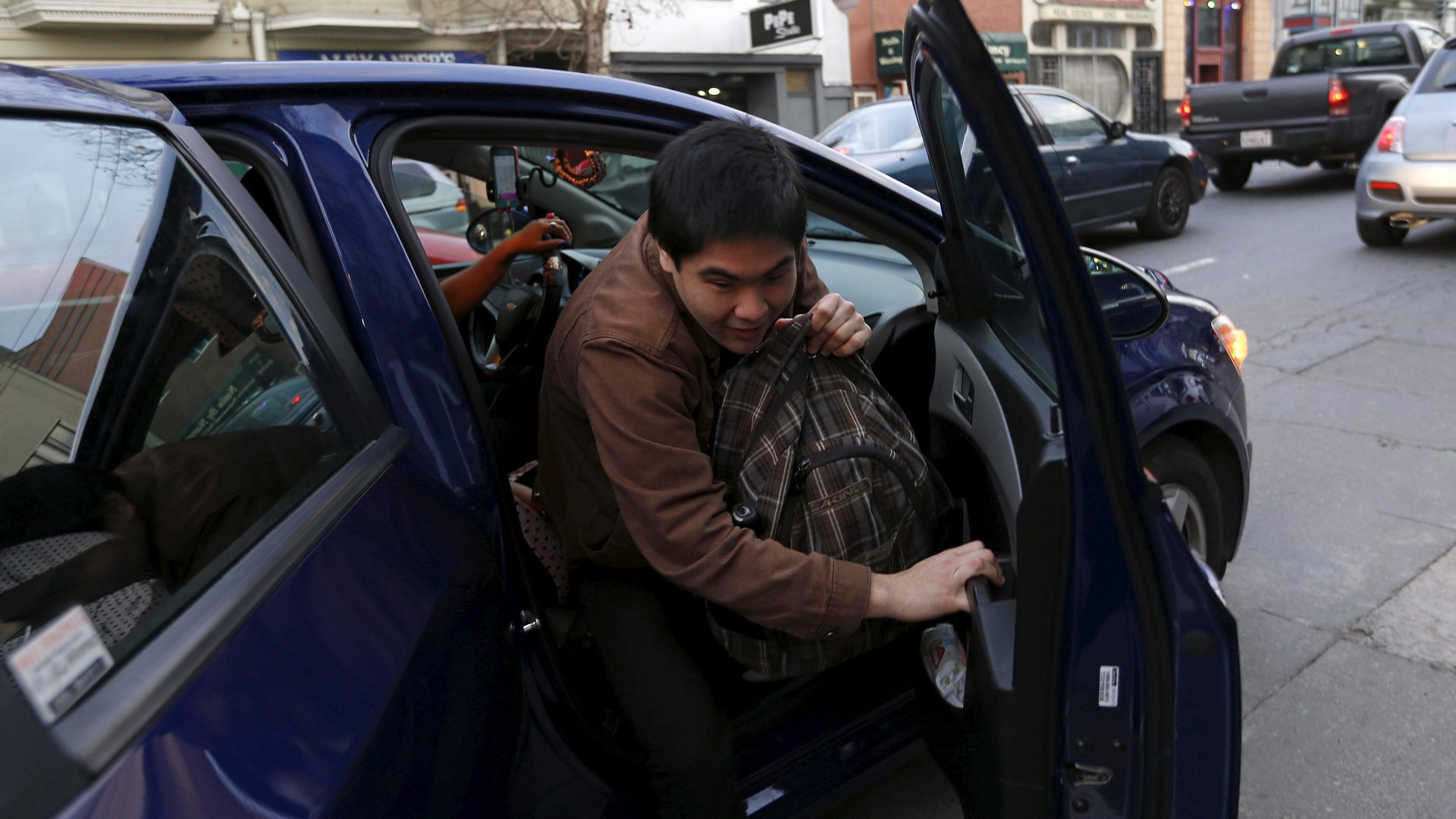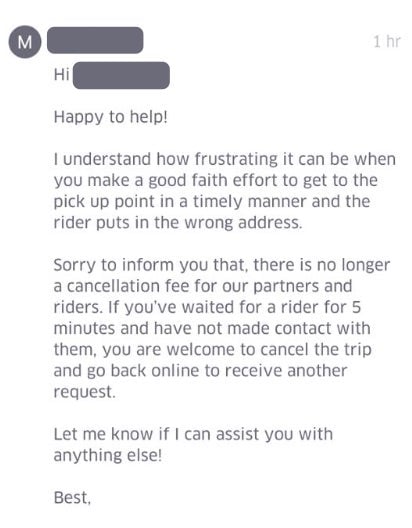Uber is tired of waiting for you
Uber is losing patience with slow riders.


Uber is losing patience with slow riders.
Under a new policy the company is testing in four US markets—New York, New Jersey, Phoenix, and Dallas—riders start getting charged two minutes after their Uber arrives. They also now have only two minutes to cancel a ride request, down from five, before incurring a cancellation fee. In New York, for example, where Uber charges $0.35 per minute, riders who show up four minutes late will have $0.70 added to their fares. The test was first reported by TechCrunch.
Uber says these changes are designed to improve the driver experience. ”Drivers’ time is valuable, and while we expect riders to request a ride only once they’re ready, we know that waiting for a rider at their pickup location can be frustrating,” the company said in a statement. “When riders and drivers are respectful of each other’s time, the whole system runs more smoothly and the Uber experience improves for everyone.”
But that reasoning is a little tough to square with another change Uber recently made in Dallas.
Typically, Uber drivers can cancel a trip if a customer hasn’t arrived within five minutes and collect a cancellation fee instead. In New York, to continue the example, the cancellation fee for riders is $10, of which the driver gets whatever is left after Uber’s cut. That’s still the case in most of the markets where Uber is testing its new late charges for riders. Except in Dallas, where Uber has stopped charging cancellation fees entirely.

The change was noticed earlier this week by a Dallas-area driver, who was told by Uber support that “there is no longer a cancellation fee for our partners and riders.” The driver posted a screenshot of the message to Facebook with the comment, “Are you freaking serious?!!!!”
An Uber spokeswoman confirmed that there is currently no cancellation fee for riders or drivers in Dallas, and said the change occurred in December 2015. Previously, customers there paid cancellation fees of $5, with the driver typically getting 75-80% of that. Uber charges $0.10 per minute on its UberX platform in Dallas, meaning in the three minutes a rider might be considered late before the ride is cancelled, a driver will make at most $0.30 extra (minus Uber’s commission) under the new policy.
Rather than driver wellbeing, these new late fees and cancellation policies seem to be aimed at improving logistics for Uber. The pursuit of efficiency is never-ending in Silicon Valley, but especially in the competitive and profit-challenged world of ride-hailing. As of February, Uber was making an average of 19 cents per ride in the US, Bloomberg reported earlier this month. Those are ultra-thin margins, which means to make them work, Uber needs both a high volume of rides and very quick turnover.
Uber has made no secret of its obsession with efficiency. In New York City, the company has released a breakdown each September of how the average UberX driver spends an hour on its platform. Since 2012, the amount of time drivers spend “on trip” (i.e., with a customer in the car) has risen steadily, while the time spent idle (between fares) has fallen.
The one part of this equation Uber hasn’t been able to crack is pick-up time. In 2015, drivers in New York City spent an average of eight minutes per hour waiting to pick up riders, the same as in 2012.
Uber has said it plans to be profitable in North America by the second quarter of 2016, and fine-tuning its logistics is undoubtedly part of that. But at a certain point, the company can only eke so much more efficiency out of its drivers. They will always have to travel a certain distance to pick up a passenger, and spend a certain amount of time completing each trip.
Where the company can tighten the slack is on the rider side. Every minute you dawdle before coming out to meet your driver is another minute ticking out of that hour, decreasing frequency and ride volume. In Uber’s relentless quest for efficiency, lackadaisical passengers are one of its greatest obstacles. The question is whether its new late fees will motivate them to be timelier, or annoy them so much that they switch to Lyft. Or, go unnoticed entirely, and help Uber ever-so-slightly improve its thin margins.